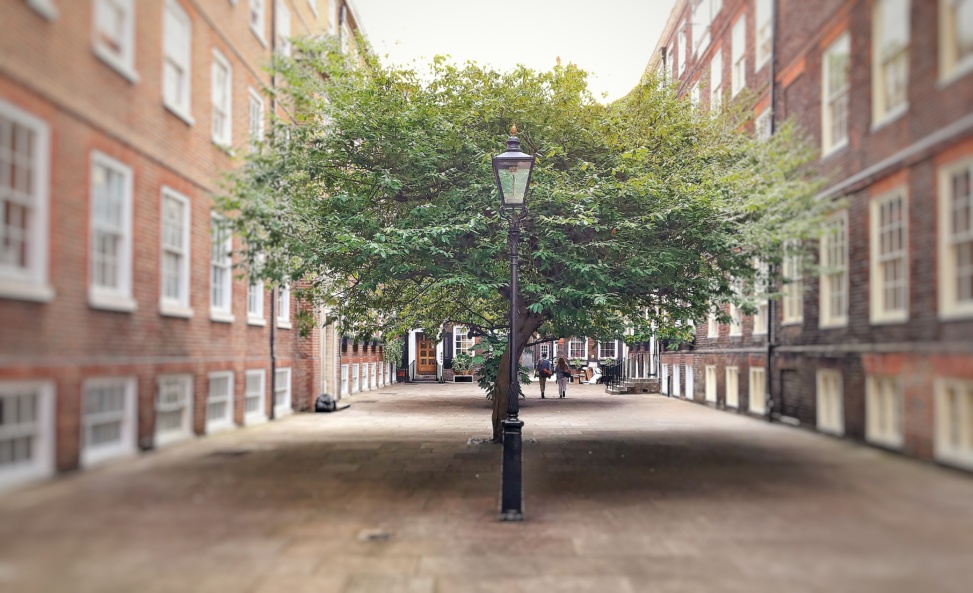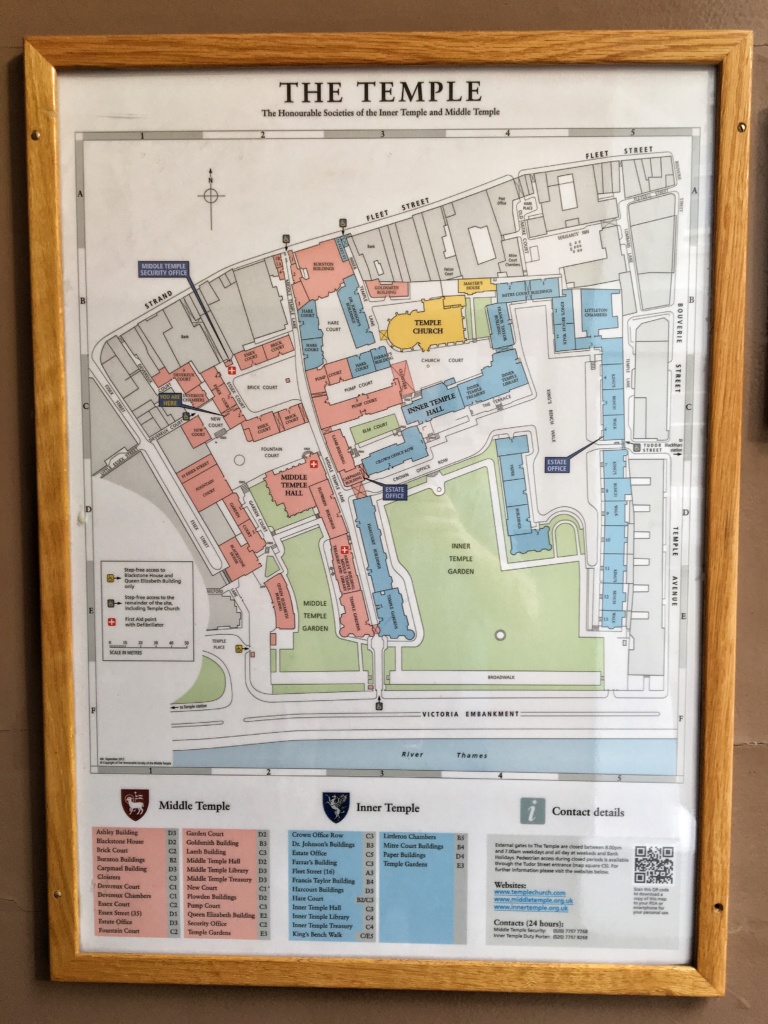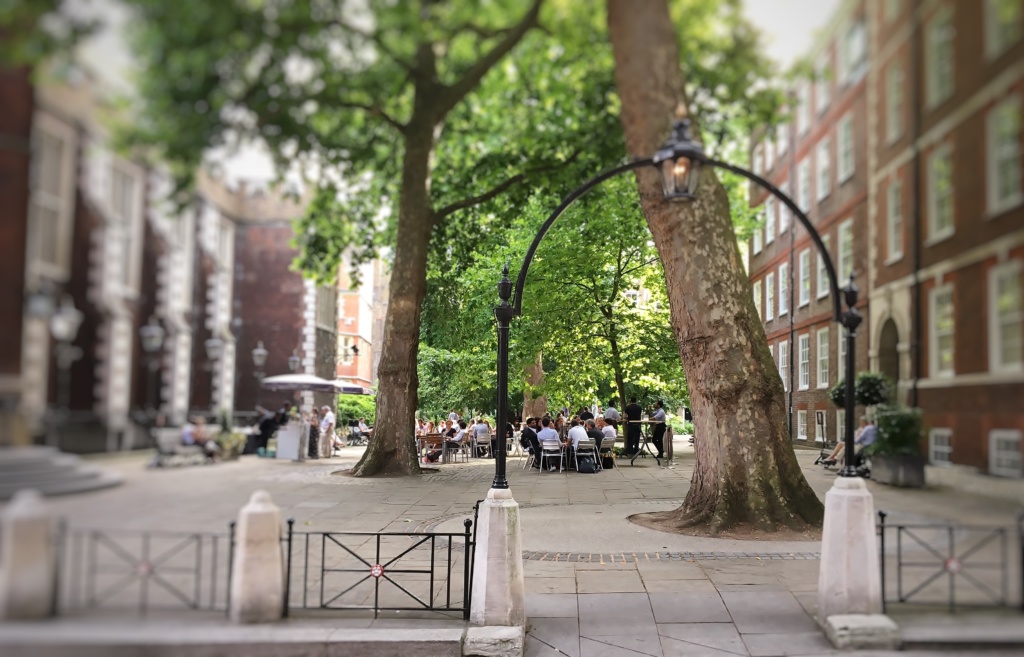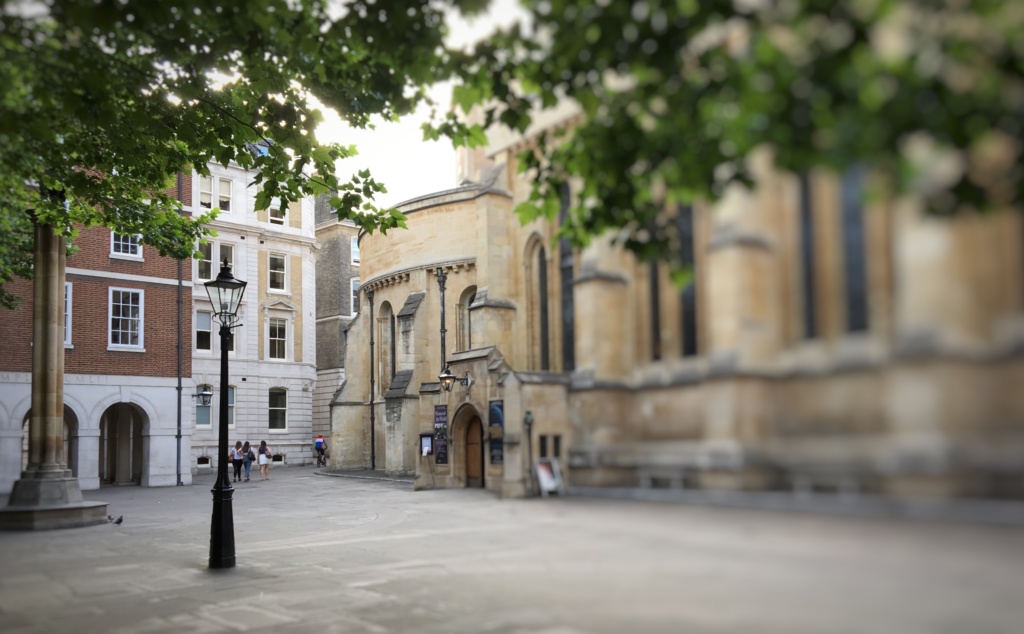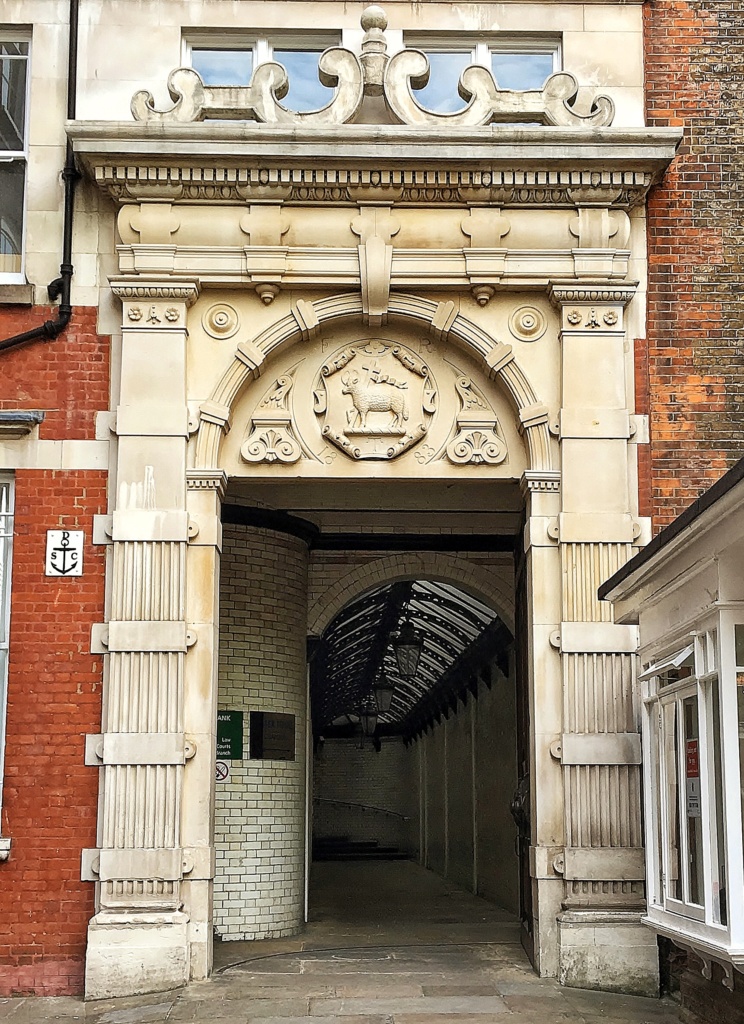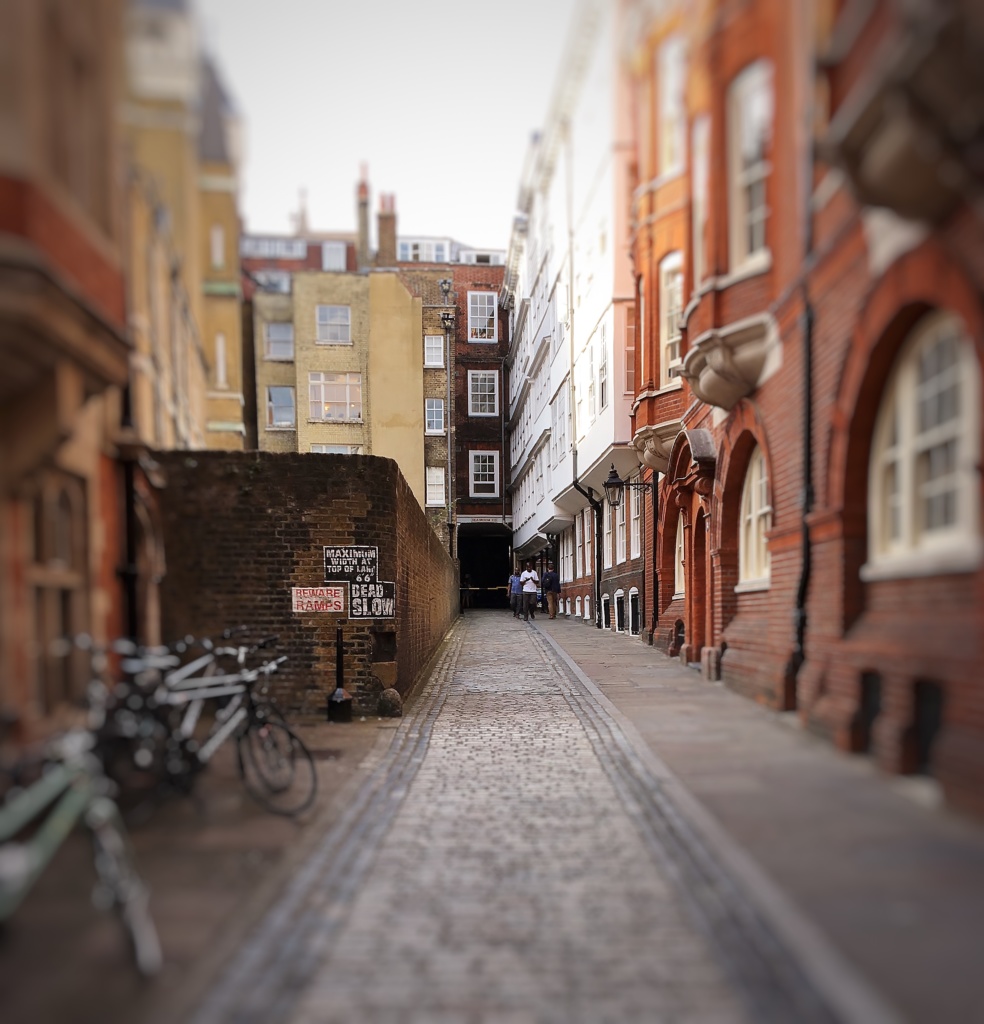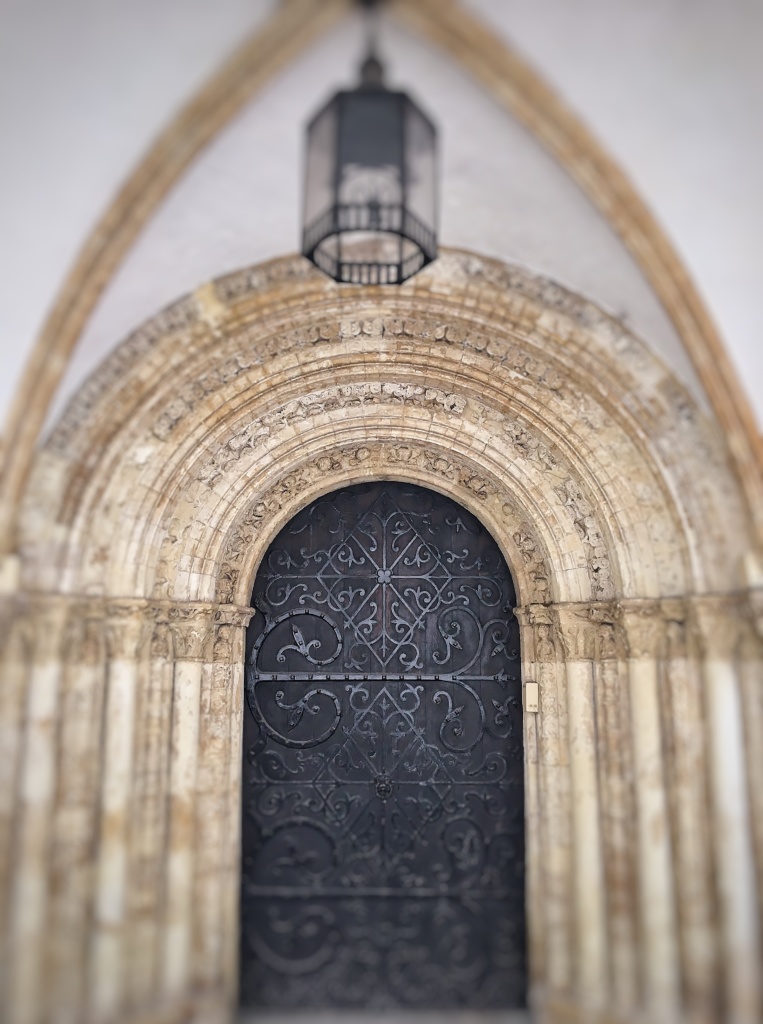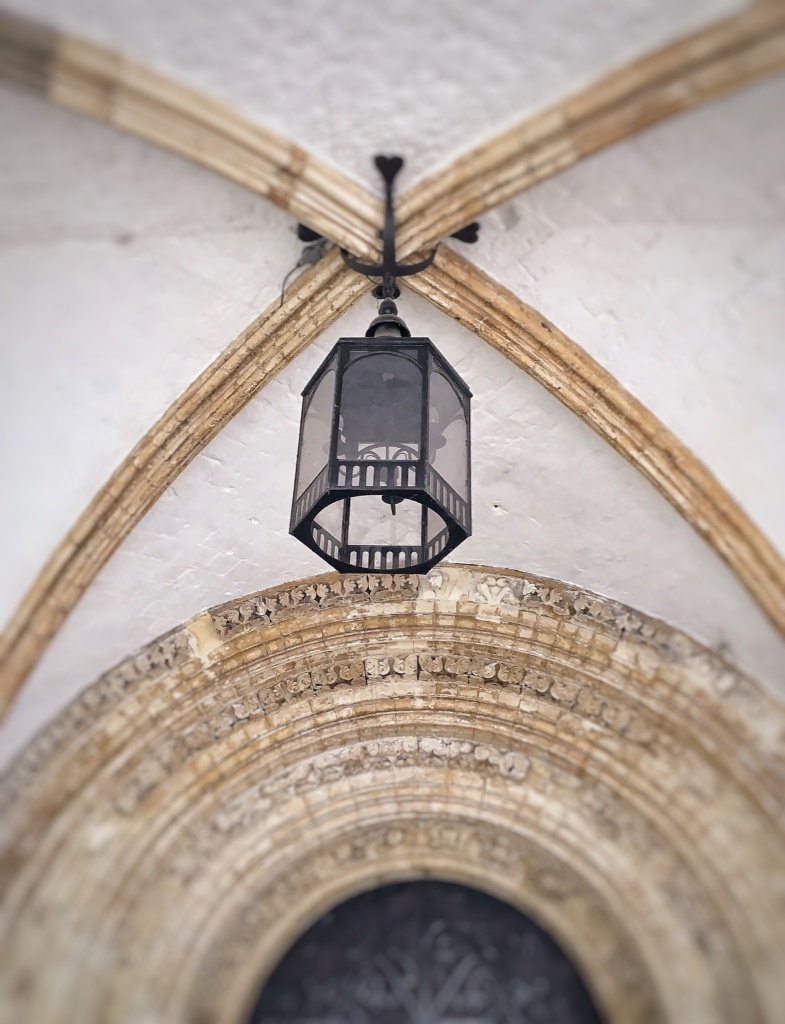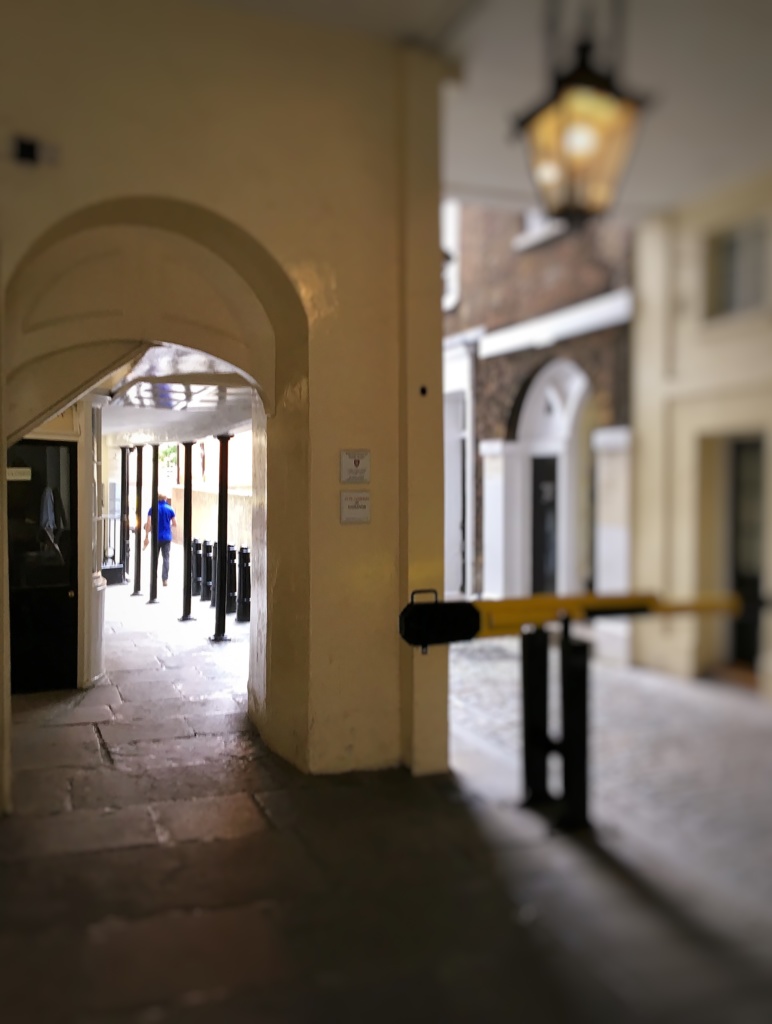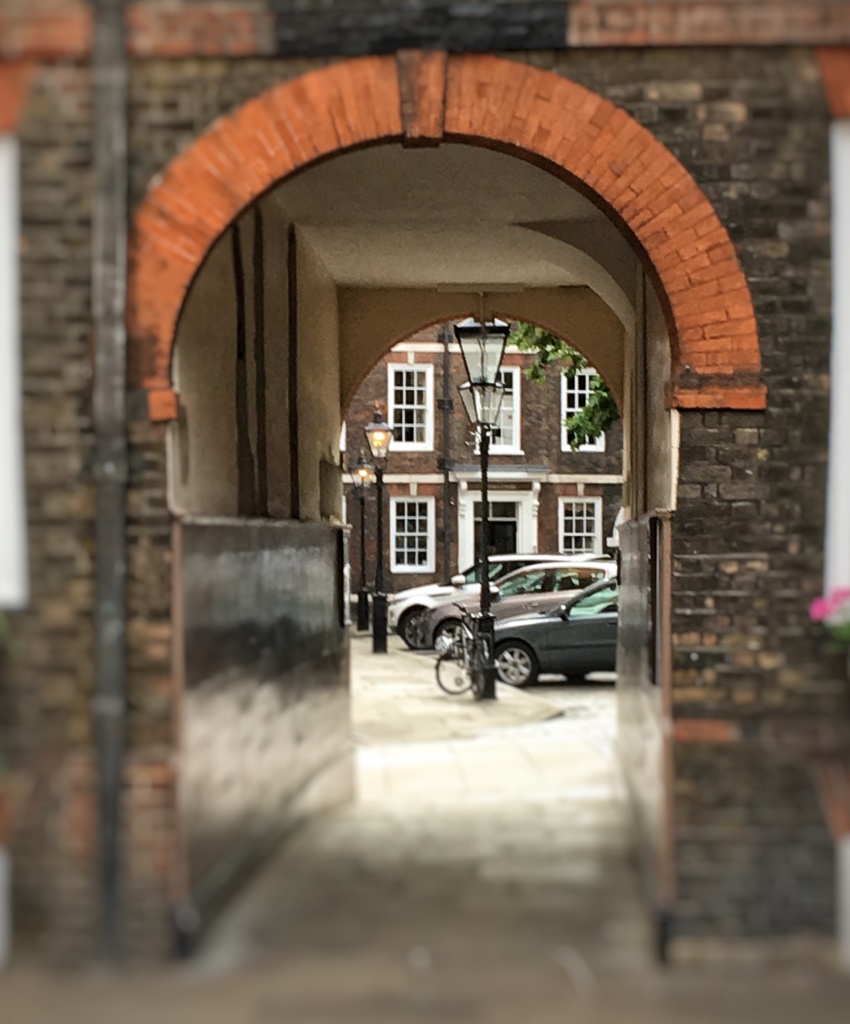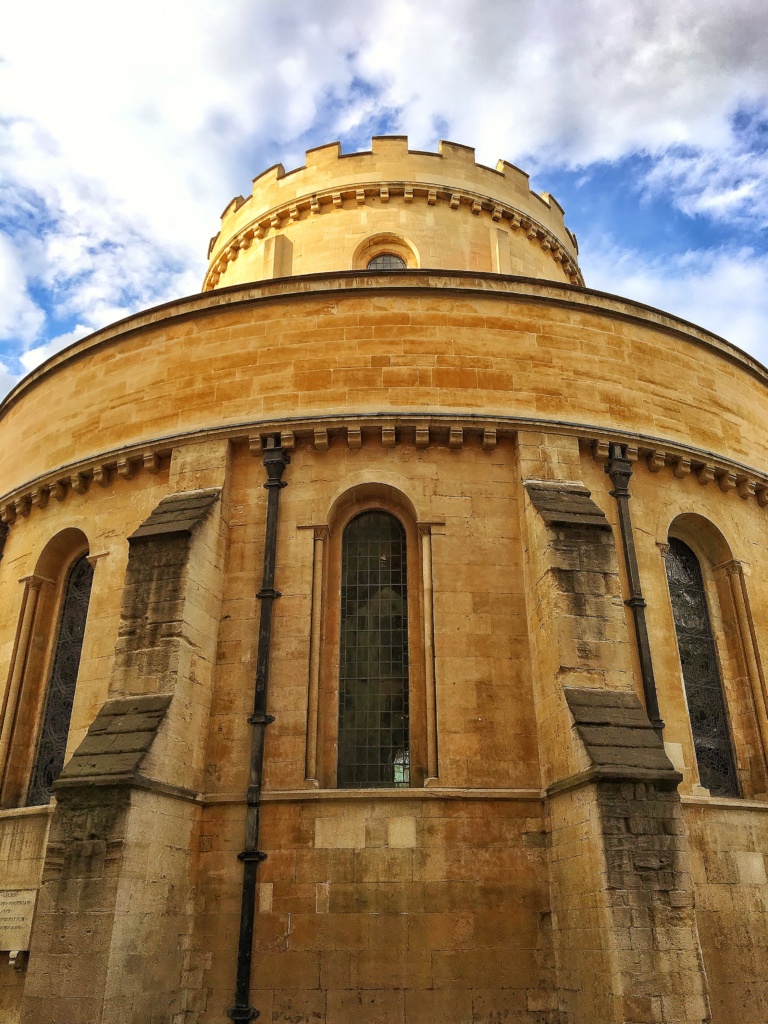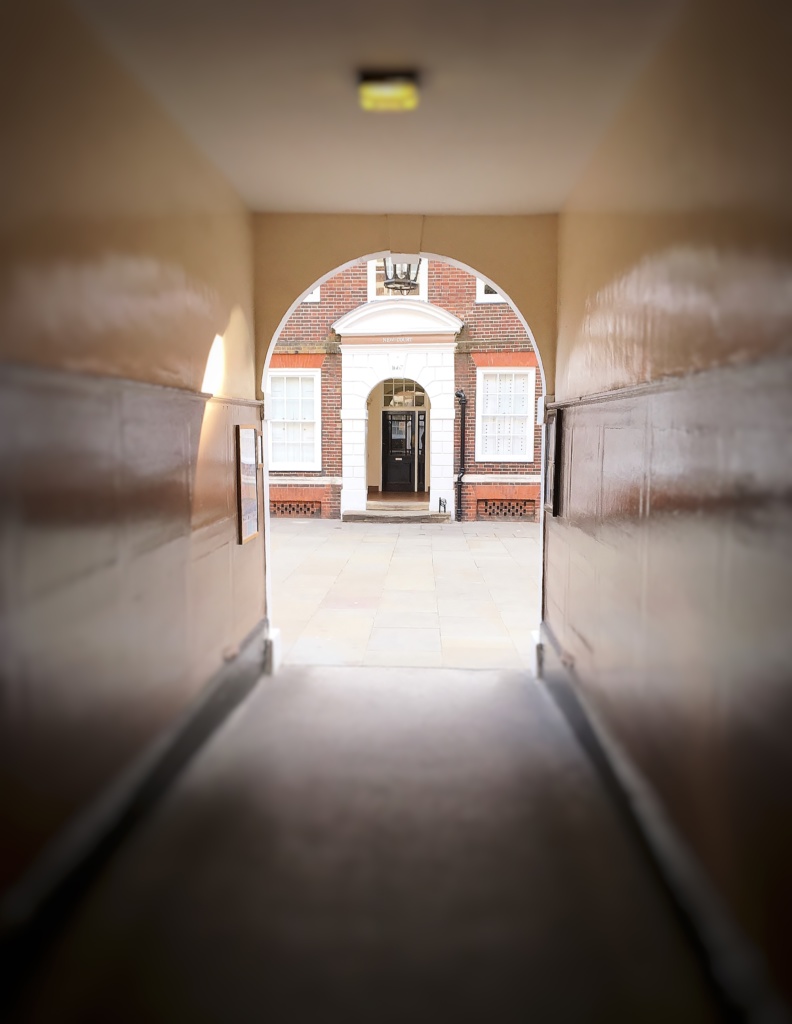It’s another wonderful, secluded London sanctuary hidden in plain sight from the busy streets that surround it, including Fleet Street and the Embankment.
And it’s also another piece of London that was acquired in the Middle Ages by the legal community, who were forbidden from practicing their foul ways inside the city walls and so set up camp just outside them. This area is called The Temple.
Along with Lincoln’s Inn and Gray’s Inn, the two Inns of the Temple comprise the Inns Of Court. A barrister in England and Wales is traditionally required to be a member of one of them. The Temple is a BOGOF and a twofer because you get two Inns Of Court on the same piece of London ground.
You can see the division on the map of the buildings of the Temple above. The blue buildings comprise what is known as the Inner Temple, which was here first, and the red ones make up the Middle Temple that grew out of the Inner Temple later. There is no longer an Outer Temple although one would once have existed beyond what is now The Strand until the sixteenth century. There remains a gate out of the Inner Temple towards it. As you walk around the Temple – and you can, it’s open to the public during working hours and has bars where you can sit and enjoy the atmosphere – it’s difficult to divine which buildings belong to what Inn.
The grounds are a delightful place to walk round on a summer’s evening; a place of archways and squares, trees and lampposts. There is a church, imaginatively called The Temple Church, that is a rich golden colour and dates from the reign of Bad King John ( of Robin Hood fame) in the twelfth century. Nine hundred years old, it was built by the Knight’s Templars whose ownership of the land preceded the lawyers and after whom the area is still known. The buildings are all interesting and predominantly date from medieval, Tudor and Georgian times.
